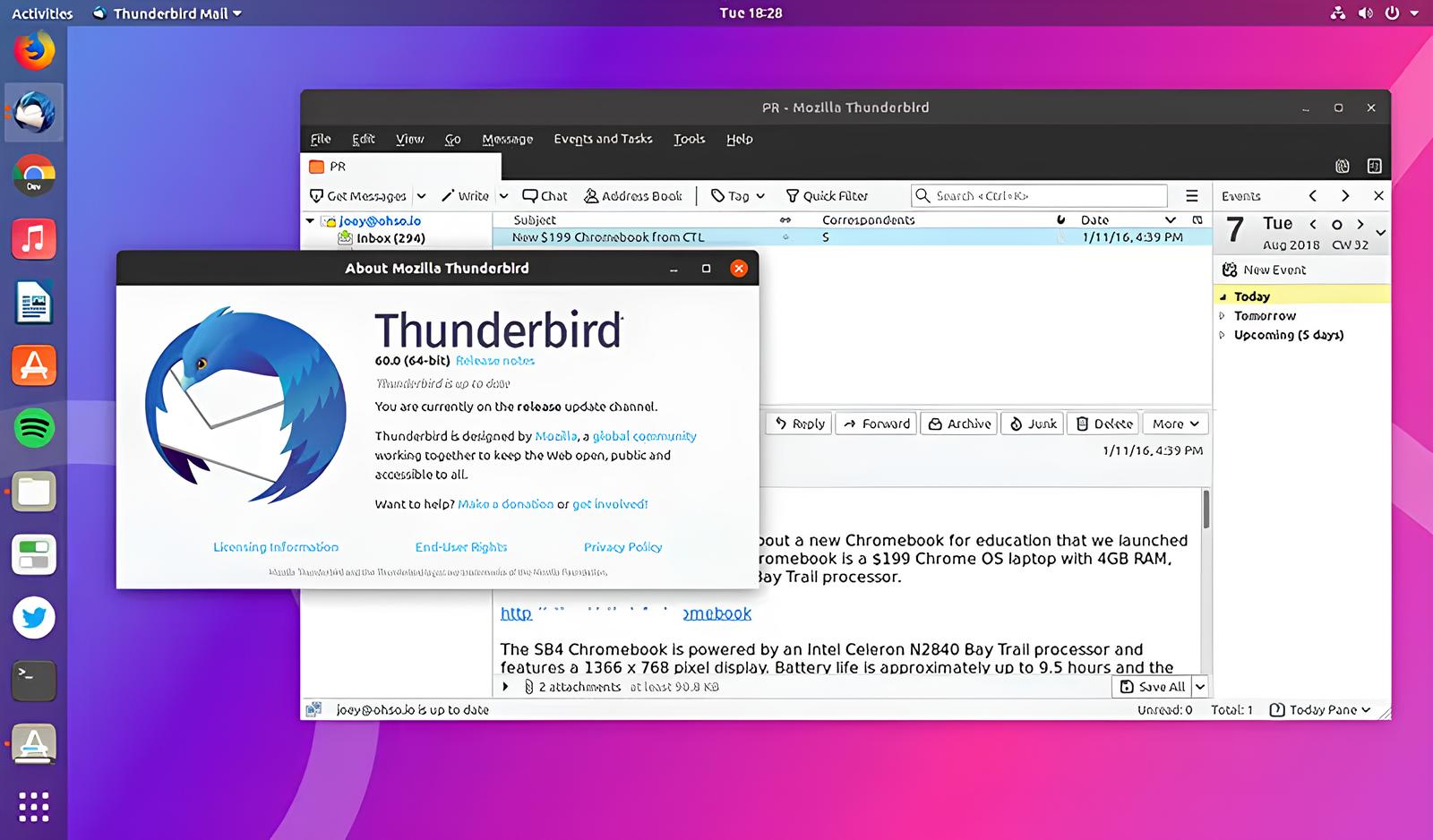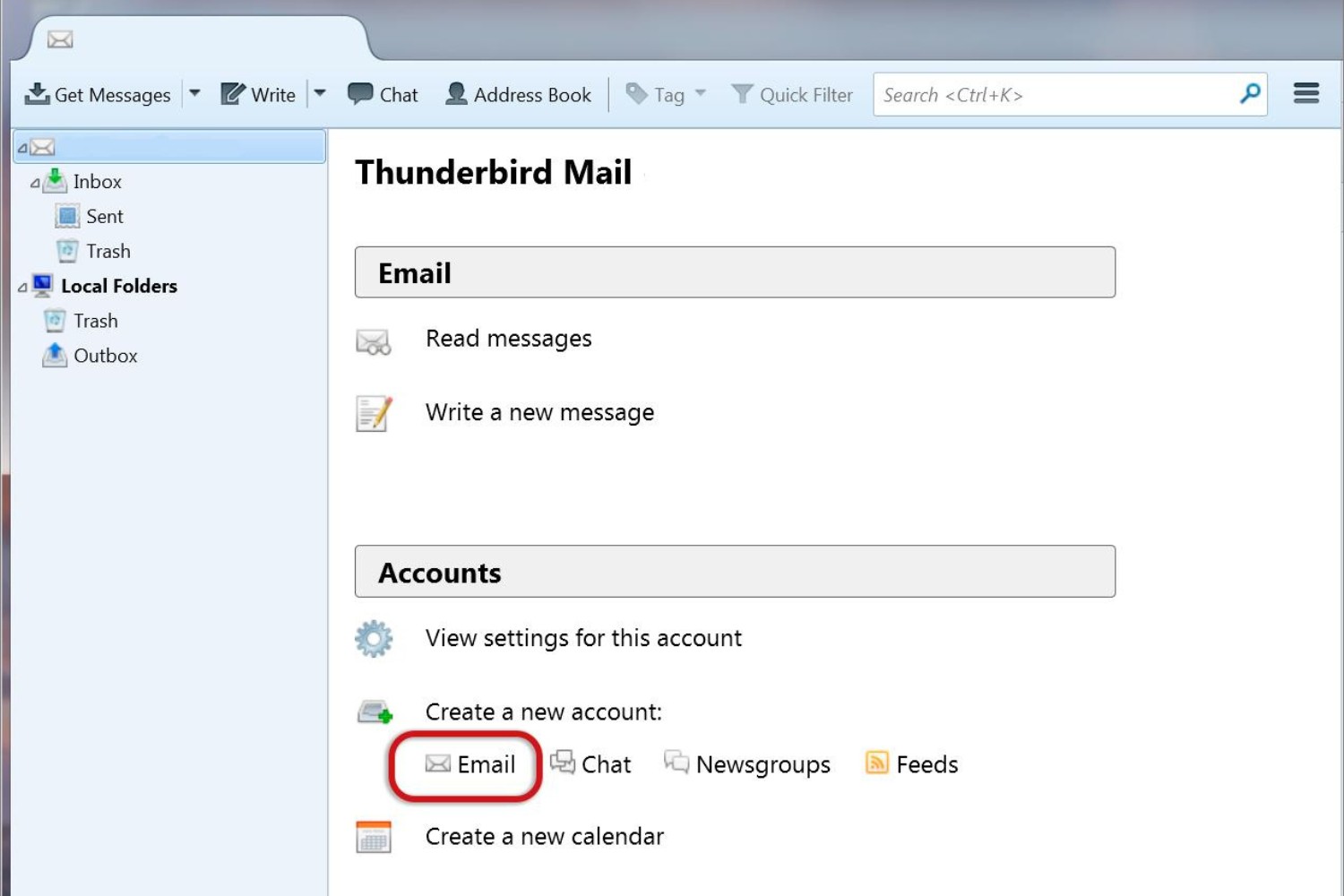Introduction
When it comes to managing emails and staying organized, Mozilla Thunderbird has been a popular choice for users across the globe. This versatile email client offers a range of features, including email management, news feed subscriptions, and chat capabilities, all within a single interface. However, despite its robust functionality, many users encounter a frustrating issue: Mozilla Thunderbird not responding. This problem can disrupt workflow, leading to delays in accessing important emails and causing unnecessary stress.
The experience of encountering a non-responsive Thunderbird can be exasperating. Imagine clicking on the Thunderbird icon, eagerly anticipating a swift launch, only to be met with unresponsiveness. The program may freeze, display the dreaded "Not Responding" message, or simply fail to open altogether. Such scenarios can leave users feeling helpless and searching for solutions to rectify the issue.
The reasons behind Thunderbird's unresponsiveness can vary, ranging from software conflicts and outdated installations to overwhelming system resources. Understanding the potential causes and implementing effective solutions is crucial for restoring Thunderbird to its efficient and reliable state.
In the following sections, we will delve into the possible causes of Mozilla Thunderbird not responding and explore practical solutions to address this issue. By gaining insights into the underlying factors and learning how to troubleshoot effectively, users can regain control over their email management system and minimize disruptions to their daily productivity. Let's embark on this journey to uncover the root of the problem and equip ourselves with the knowledge to conquer Thunderbird's unresponsiveness.
Possible Causes of Mozilla Thunderbird Not Responding
Mozilla Thunderbird not responding can be attributed to various factors, each capable of disrupting the smooth operation of this email client. Understanding these potential causes is essential for effectively troubleshooting the issue. Here are some common reasons why Mozilla Thunderbird may become unresponsive:
-
Large Email Accounts: Users with extensive email archives or accounts with a high volume of messages may experience Thunderbird not responding. When Thunderbird attempts to synchronize or index a large number of emails, it can strain system resources, leading to unresponsiveness.
-
Add-Ons and Extensions: While add-ons and extensions can enhance Thunderbird's functionality, they can also contribute to its unresponsiveness. Incompatibility issues or outdated add-ons may conflict with Thunderbird's operations, causing it to freeze or become unresponsive.
-
Outdated Software: Running an outdated version of Thunderbird can result in performance issues, including unresponsiveness. Newer versions often include bug fixes and performance optimizations, addressing issues that could lead to unresponsiveness.
-
Corrupted Profile: A corrupted Thunderbird profile can lead to various issues, including unresponsiveness. This can occur due to unexpected shutdowns, file system errors, or other factors that compromise the integrity of the user profile.
-
Resource Constraints: Insufficient system resources, such as low RAM or a heavily fragmented hard drive, can impact Thunderbird's performance. When the system struggles to allocate resources for Thunderbird's operations, it may become unresponsive.
-
Conflicting Software: Certain third-party software, such as security suites or system optimization tools, can conflict with Thunderbird, leading to unresponsiveness. This can occur due to interference with network connections, file access, or system processes.
-
Network Issues: Unstable or slow network connections can impede Thunderbird's ability to communicate with email servers, resulting in unresponsiveness during email retrieval or synchronization processes.
-
Hardware Malfunctions: In some cases, hardware issues such as a failing hard drive or a malfunctioning RAM module can manifest as unresponsiveness in Thunderbird and other applications.
By recognizing these potential causes, users can gain valuable insights into the factors contributing to Thunderbird's unresponsiveness. Armed with this knowledge, they can proceed to implement targeted solutions to address the specific underlying issues, thereby restoring Thunderbird to its optimal functionality.
Solutions to Fix Mozilla Thunderbird Not Responding
Resolving the issue of Mozilla Thunderbird not responding requires a systematic approach that addresses the underlying causes effectively. By implementing targeted solutions, users can restore Thunderbird to its responsive and reliable state. Here are practical strategies to fix Thunderbird unresponsiveness:
1. Manage Email Accounts:
- Archive Old Emails: For users with extensive email archives, archiving old emails can reduce the load on Thunderbird, improving its responsiveness.
- Compact Folders: Utilize Thunderbird's folder compacting feature to optimize storage space and enhance performance.
2. Review Add-Ons and Extensions:
- Update or Remove Add-Ons: Ensure that all installed add-ons and extensions are compatible with the current version of Thunderbird. Remove outdated or problematic add-ons that may be causing unresponsiveness.
3. Update Thunderbird:
- Install Latest Version: Check for and install the latest version of Thunderbird to benefit from performance improvements, bug fixes, and enhanced stability.
4. Repair or Recreate Profile:
- Safe Mode: Launch Thunderbird in safe mode to troubleshoot potential profile issues. If the program operates smoothly in safe mode, consider repairing or recreating the user profile to address underlying corruption.
5. Optimize System Resources:
- Free Up Disk Space: Ensure that the system has adequate free disk space to facilitate Thunderbird's operations.
- Increase RAM: Consider upgrading system RAM if Thunderbird's performance is hindered by memory constraints.
6. Address Software Conflicts:
- Temporarily Disable Security Software: Temporarily disable security suites or firewall software to identify if they are causing conflicts with Thunderbird. Adjust settings or seek alternative software if conflicts persist.
7. Network Troubleshooting:
- Stable Connection: Ensure a stable and reliable network connection to prevent interruptions during email retrieval and synchronization processes.
8. Hardware Diagnostics:
- Check Hardware Health: Perform diagnostics to identify and address any hardware issues that may be contributing to Thunderbird's unresponsiveness.
By systematically addressing these potential solutions, users can effectively troubleshoot and resolve the issue of Mozilla Thunderbird not responding. It is important to approach each solution methodically, testing the program's responsiveness after each step to gauge the effectiveness of the implemented measures. With patience and persistence, users can restore Thunderbird to its optimal state, ensuring a seamless and efficient email management experience.
Conclusion
In conclusion, the frustration of encountering a non-responsive Mozilla Thunderbird can be a thing of the past with the implementation of targeted solutions and a deeper understanding of the potential causes. By delving into the intricacies of Thunderbird's unresponsiveness, users can equip themselves with the knowledge and strategies needed to restore the program to its efficient and reliable state.
The diverse range of factors contributing to Thunderbird's unresponsiveness underscores the importance of a systematic approach to troubleshooting. From managing email accounts and reviewing add-ons to optimizing system resources and addressing potential software conflicts, the solutions presented offer a comprehensive toolkit for users to effectively tackle the issue.
Furthermore, the proactive management of email accounts, including archiving old emails and compacting folders, can significantly alleviate the strain on Thunderbird, enhancing its responsiveness. Additionally, staying vigilant about add-ons and extensions, ensuring compatibility and relevance, is crucial for maintaining Thunderbird's optimal performance.
The significance of keeping Thunderbird updated cannot be overstated, as newer versions often include critical bug fixes and performance optimizations. This, coupled with the diligent repair or recreation of user profiles and the optimization of system resources, forms a robust approach to addressing Thunderbird's unresponsiveness.
Moreover, the consideration of potential software conflicts and network stability, along with the evaluation of hardware health, completes the holistic approach to troubleshooting Thunderbird's unresponsiveness. By systematically implementing these solutions and testing the program's responsiveness at each stage, users can effectively restore Thunderbird to its optimal state.
In essence, the journey to conquer Thunderbird's unresponsiveness is one of patience, persistence, and proactive problem-solving. By embracing these strategies and maintaining a proactive approach to email management, users can ensure a seamless and efficient experience with Mozilla Thunderbird, free from the frustrations of unresponsiveness.

























